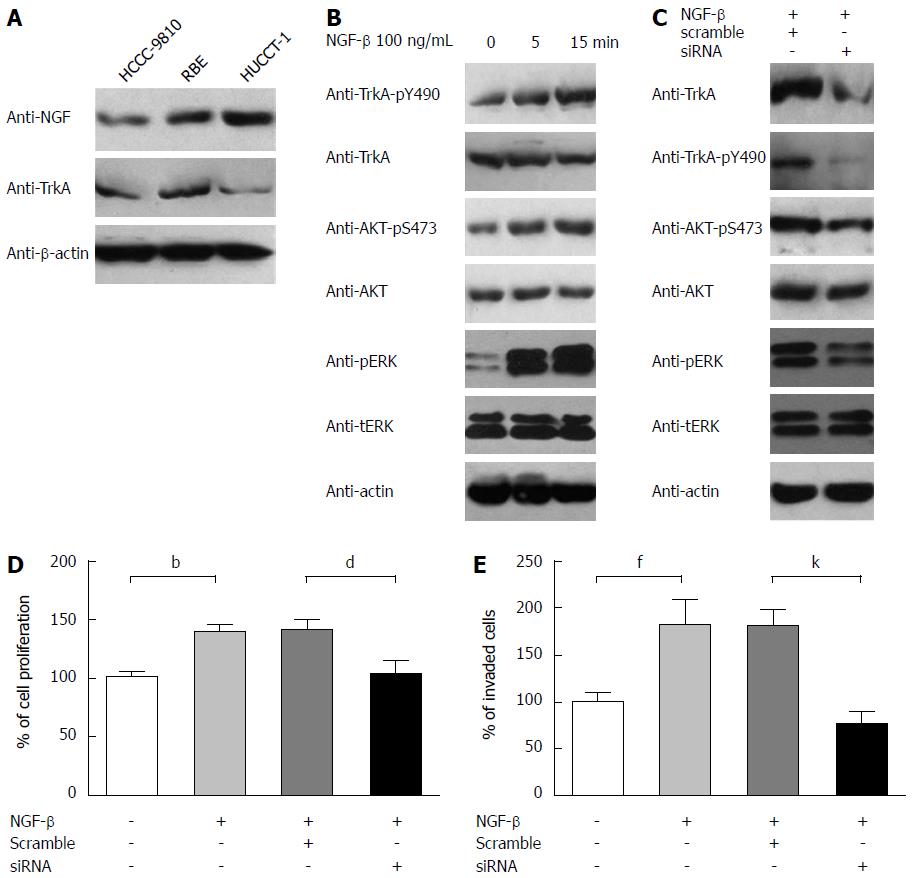Copyright
©2014 Baishideng Publishing Group Co.
World J Gastroenterol. Apr 14, 2014; 20(14): 4076-4084
Published online Apr 14, 2014. doi: 10.3748/wjg.v20.i14.4076
Published online Apr 14, 2014. doi: 10.3748/wjg.v20.i14.4076
Figure 3 Nerve growth factor-tropomyosin-receptor-kinase signaling pathway can promote cholangiocarcinoma proliferation and invasion.
A: NGF and TrkA expression in IHCC cell line HCCC9810, RBE and HUCCT-1; B: Phosphorylation level of TrkA, AKT and ERK notably elevated with NGF stimulation for different time (0, 5 or 15 min); C: After TrkA knocked down, phosphorylation level of TrkA, AKT and ERK decreases significantly; D: Proliferation of RBE was tested by MTT 48 h after siRNA transfection. NGF-β can promote RBE proliferation and TrkA knockdown reduces this tendency. Data were from three independent experiments and statistical analysis was performed by student t test, bP < 0.01 between control and HCCC9810; dP < 0.01 vs RBE and HUCCT-1; E: Invasive activity of RBE cells. RBE invasion is accelerated by NGF-β stimulation and reversed by TrkA knockdown. Cell numbers were counted under 200 × magnification. Data were from at least three independent experiments and statistical significance was measured by student t test, fP < 0.01 between control and HCCC9810; kP < 0.01 vs RBE and HUCCT-1. NGF: Nerve growth factor; IHCC: Intrahepatic cholangiocarcinoma; TrkA: Tropomyosin-receptor-kinase.
- Citation: Yang XQ, Xu YF, Guo S, Liu Y, Ning SL, Lu XF, Yang H, Chen YX. Clinical significance of nerve growth factor and tropomyosin-receptor-kinase signaling pathway in intrahepatic cholangiocarcinoma. World J Gastroenterol 2014; 20(14): 4076-4084
- URL: https://www.wjgnet.com/1007-9327/full/v20/i14/4076.htm
- DOI: https://dx.doi.org/10.3748/wjg.v20.i14.4076









